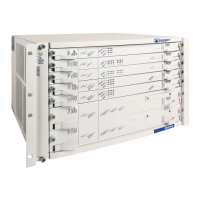Platform Considerations ! 151
Chapter 6: Packet Mirroring
Platform Considerations
For information about modules that support packet mirroring on ERX-14xx models,
ERX-7xx models, and the ERX-310 router:
! See ERX Module Guide, Chapter 1, Module Combinations for detailed module
specifications.
! See ERX Module Guide, Appendix A, Module Protocol Support for information
about the modules that support packet mirroring.
For detailed information about the modules that support packet mirroring on the
E320 router:
! See E320 Module Guide, Chapter 1, Modules and IOAs for detailed module
specifications.
! See E320 Module Guide, Appendix A, IOA Protocol Support for information about
the protocols and applications that support packet mirroring.
References
For more information about RADIUS-based packet mirroring, consult the following
resources:
! RFC 3576—Dynamic Authorization Extensions to Remote Authentication Dial
In User Service (RADIUS) (July 2003) in JUNOSe System Basics Configuration
Guide, Appendix B, References
Configuring CLI-Based Packet Mirroring
The JUNOSe software enables you to use CLI commands to configure and manage
packet mirroring on specific static IP interfaces, or for a specific user. You use CLI
commands to create a secure policy that specifies the analyzer device and how the
mirrored traffic is treated.
When you mirror an interface, you can replicate ingress and egress traffic on the
interface (traffic entering or exiting the E-series router through that interface).
When you mirror a user, you can replicate all traffic to or from the user.
In both interface-specific and user-specific mirroring, the original traffic is
forwarded to its intended destination as usual, while the replicated copy of the
traffic is forwarded to an analyzer port on the E-series router. The analyzer port then
directs the mirrored traffic to the specified analyzer device for analysis.
Figure 8 shows the traffic flow for ingress and egress IP interface mirroring.

